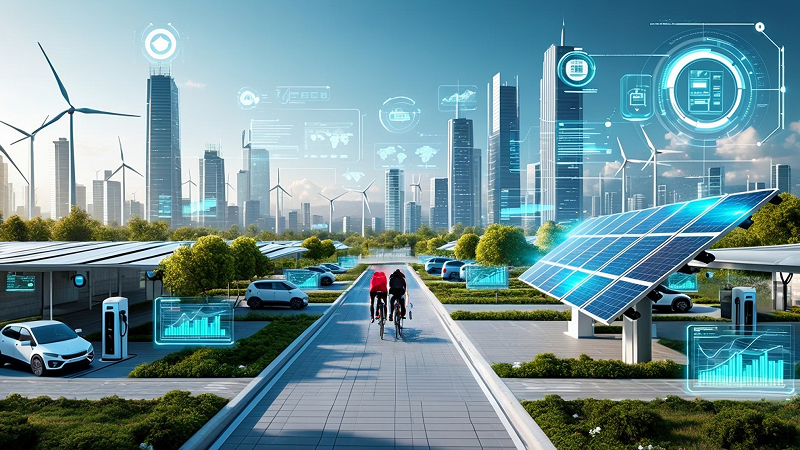Smart Cities India 2025 - How Technology Is Quietly Redefining Urban Life

The India We’re Stepping Into
Last month, while stuck in traffic on a hot Delhi afternoon, my phone buzzed with a notification: “Air quality in your zone improving — new smart sensor readings available.” It was oddly comforting. Ten years ago, we didn’t even know real-time AQI for most cities. Today, we’re tracking it street-by-street.
It made me wonder — how much of our daily life in India is already being shaped by smart city technology without us even noticing?
From intelligent traffic systems to digital health kiosks, the Smart Cities Mission launched in 2015 is entering its maturity phase in 2025. And this year feels different. Not because the projects are new — but because they’re finally visible in everyday life.
If you’re curious about how India’s urban future is unfolding around you, this article is for you.
What “Smart City” Really Means in India
India’s Smart Cities Mission began with a bold objective: transform 100 cities through digital infrastructure, sustainable planning, and data-driven governance.
According to the Ministry of Housing and Urban Affairs (MoHUA), over 7,800 projects worth ₹1.8 lakh crore are in various stages of completion (MoHUA, 2024).
But here’s the catch — a smart city isn’t about futuristic skyscrapers or flying drones. It’s about how intelligently a city uses data, energy, and infrastructure to improve everyday life.
In India, that means:
- Better mobility
- Cleaner public spaces
- Safer streets
- Faster public services
- Accessible healthcare and education
And 2025 marks a critical year where execution is catching up with ambition.
India’s Smart City Wins
To understand how these initiatives are playing out, let’s look at three cities transforming on the ground.
1. Indore: The Cleanest City Turns Smarter
Indore’s cleanliness success story is well-known, but its 2025 smart infrastructure upgrades are equally impressive.
The city deployed an AI-powered waste tracking system that monitors garbage trucks in real time. According to the Swachh Survekshan 2024 report, this helped Indore maintain a 95% waste collection rate efficiently.
Sensors in bins, QR-based waste collection, and citizen dashboards make public participation effortless.
Why it works: Indore didn’t chase fancy tech; it digitized existing processes.
2. Surat: India’s IoT-Driven Safe City Model
Surat invested early in IoT and predictive analytics. The city’s Integrated Command and Control Centre (ICCC) now connects CCTV networks, traffic lights, flood warning systems, and emergency response.
A 2024 NASSCOM study notes that these systems reduced emergency response time by nearly 30%.
What stands out: Surat uses real-time data to solve problems proactively—not after damage is done.
3. Bengaluru: Tackling Traffic With AI and Digital Twins
In 2025, Bengaluru introduced AI-based traffic optimization using digital twin simulations. The system analyzes peak-hour congestion and dynamically adjusts signals across major corridors.
A pilot study shared by the Bangalore Traffic Police indicated 12–15% smoother traffic flow on test routes.
Lesson: Complex cities need layered digital solutions, not one-off fixes.
When Smart City Tech Actually Helped Me
I used to be skeptical about fancy dashboards and acronyms like ICCC. They felt like something only officials cared about.
But during monsoons last year, an unexpected flood alert popped up on my phone through the city’s early warning system. I changed routes and avoided a waterlogged nightmare.
That moment changed my perspective.
Smart cities aren’t about technology — they’re about minimizing chaos.
And anyone who has lived in a big Indian city knows chaos is our biggest problem.
What’s Actually Happening in 2025
Three big shifts are defining India’s smart city evolution this year:
1. The Rise of Data Cities
Cities now run Urban Data Exchanges that bring together traffic, utilities, health, and climate data.
Industry experts highlight that this integrated data layer is what turns cities truly smart — because departments stop working in silos.
2. Public Services Are Going Hyper-Digital
From e-clinics to AI-based grievance portals, services are becoming faster and more citizen-friendly.
Many cities are piloting:
- Facial recognition for public safety
- Smart parking
- Digital mobility cards
- AI-powered water leak detection
3. Sustainability Moves to the Forefront
Solar rooftops, EV-ready streets, and energy-efficient streetlights are becoming default.
MoHUA reports a 60% rollout of LED streetlights across mission cities, drastically cutting electricity bills.
Actionable Takeaways: What This Means for Citizens
You don’t need to be a policymaker to benefit from smart city initiatives. Here’s what you can do:
1. Use the apps your city offers
Most ICCC dashboards now provide citizen versions for alerts, complaints, and updates.
2. Participate in data-driven governance
Feedback loops are crucial. Smart cities depend on user input.
3. Adopt small sustainable habits
Solar, EV adoption, and waste segregation amplify citywide impact.
India’s Urban Future Is Quietly Becoming Smarter
The most fascinating thing about India’s Smart Cities Mission in 2025 is that it’s finally shifting from concept to experience.
We’re not talking about futuristic sci-fi dreams; we’re talking about cleaner streets, smoother commutes, safer nights, and responsive governance.
The smart city revolution isn’t loud — but it is happening.
And if we lean into it, our daily lives could become significantly more livable, one intelligent system at a time.